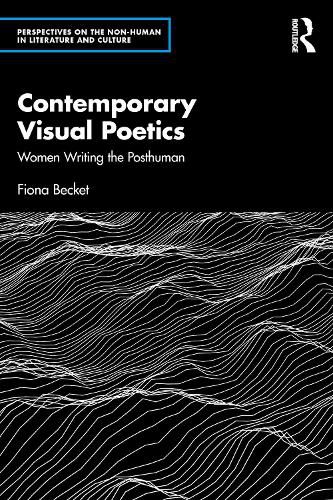Readings Newsletter
Become a Readings Member to make your shopping experience even easier.
Sign in or sign up for free!
You’re not far away from qualifying for FREE standard shipping within Australia
You’ve qualified for FREE standard shipping within Australia
The cart is loading…






This book examines contemporary visual poetry and how conceptual writing, poem-objects, and computational texts shape a posthumanist understanding which is "situated". First, the eye is theorised with respect to ethical understanding. When visual poets reclaim vision, visual poetics becomes feminist praxis. In Paula Claire and Maggie O'Sullivan "vispo" becomes an ecological practice concerned with connectivity in the entanglements of natureculture. In O'Sullivan, Campanello, Bergvall, and Philip spatial and temporal sense (de)formation sustains radical forms of voicing and eyewitness. Finally, works by Mez Breeze and Stephanie Strickland expand our understanding of visual poetry in digital (electronic, VR and AI) contexts in which technology and affect are intimately connected. These visual texts open up Braidotti's question with respect to how we are to "visualize the subject as a transversal entity encompassing the human, our genetic neighbours the animals and the earth as a whole, and to do so within an understandable language".
$9.00 standard shipping within Australia
FREE standard shipping within Australia for orders over $100.00
Express & International shipping calculated at checkout
This book examines contemporary visual poetry and how conceptual writing, poem-objects, and computational texts shape a posthumanist understanding which is "situated". First, the eye is theorised with respect to ethical understanding. When visual poets reclaim vision, visual poetics becomes feminist praxis. In Paula Claire and Maggie O'Sullivan "vispo" becomes an ecological practice concerned with connectivity in the entanglements of natureculture. In O'Sullivan, Campanello, Bergvall, and Philip spatial and temporal sense (de)formation sustains radical forms of voicing and eyewitness. Finally, works by Mez Breeze and Stephanie Strickland expand our understanding of visual poetry in digital (electronic, VR and AI) contexts in which technology and affect are intimately connected. These visual texts open up Braidotti's question with respect to how we are to "visualize the subject as a transversal entity encompassing the human, our genetic neighbours the animals and the earth as a whole, and to do so within an understandable language".